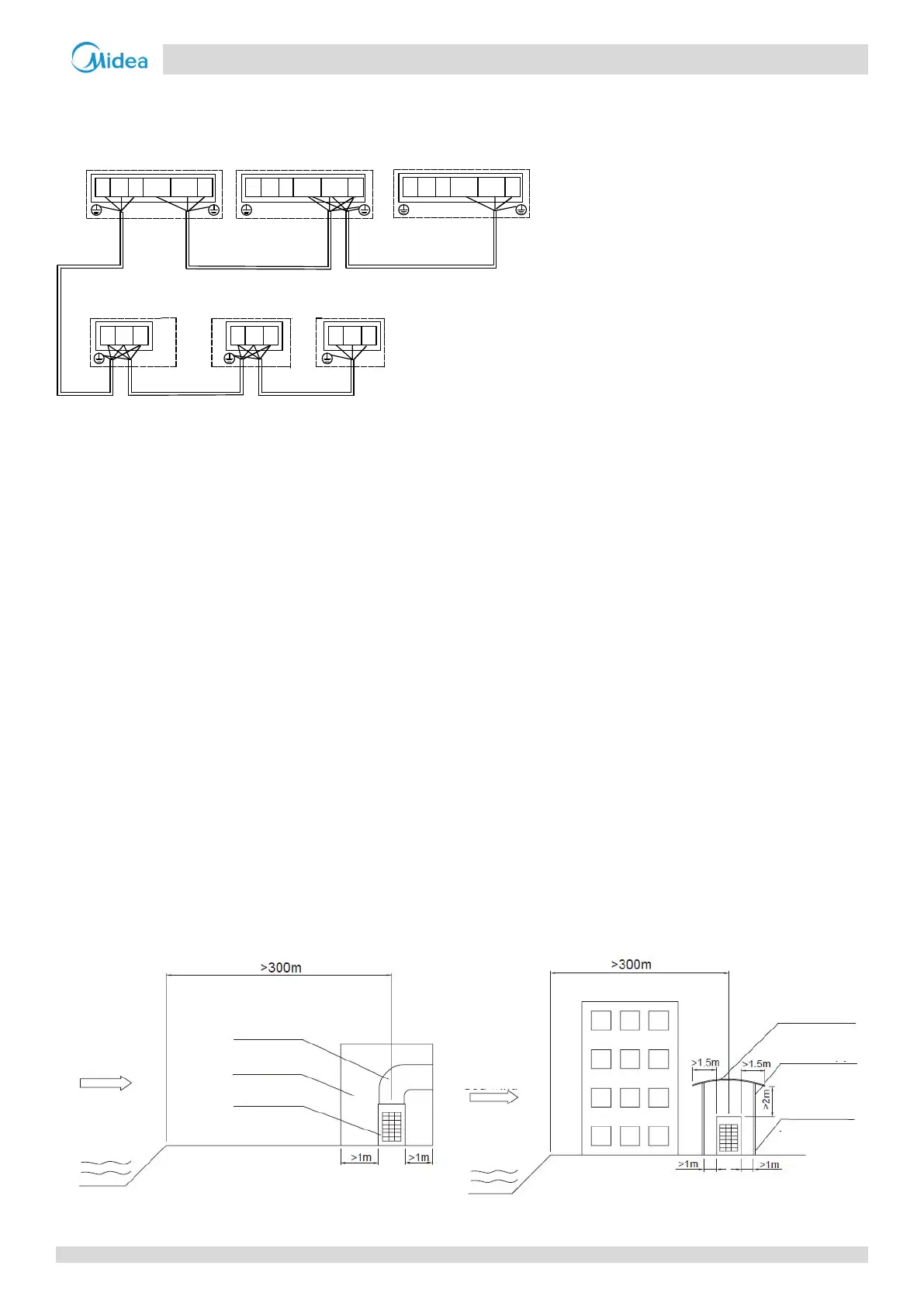VC Pro VRF 50/60Hz
185
Part 3 - System Design and Installation
Communication wiring for a multi outdoor unit system
Figure 3-9.7: Communication wiring for a multi outdoor unit system
10 Installation in Areas of High Salinity
10.1 Caution
Do not install outdoor units where they could be directly exposed to sea air. Corrosion, particularly on the condenser and
evaporator fins, could cause product malfunction or inefficient performance.
Outdoor units installed in seaside locations should be placed such as to avoid direct exposure to the sea air and additional
anticorrosion treatment options should be selected, otherwise the service life of the outdoor units will be seriously affected.
Air conditioning installed in seaside locations should be run regularly as the running of the outdoor unit fans helps prevent
build-up of salt on the outdoor unit heat exchangers.
10.2 Placement and Installation
Outdoor units should be installed 300m or more from the sea. If possible, well-ventilated indoor locations should be chosen.
(When installing outdoor units indoors, outdoor unit discharge ducts should be added. See Part 3, 3 “Outdoor Unit Ducting
and Shielding”.) Refer to Figure 3-10.1. If it is necessary to install outdoor units outside, direct exposure to the sea air should
be avoided. A canopy should be added to shield the units from sea air and rain, as shown in Figure 3-10.2.
Ensure that base structures drain well so that outdoor unit footings do not become waterlogged. Check that outdoor unit
casing drainage holes are not blocked.
Figure 3-10.1: Installation in a well-ventilated indoor area
Figure 3-10.2: Installation outdoors under a canopy
